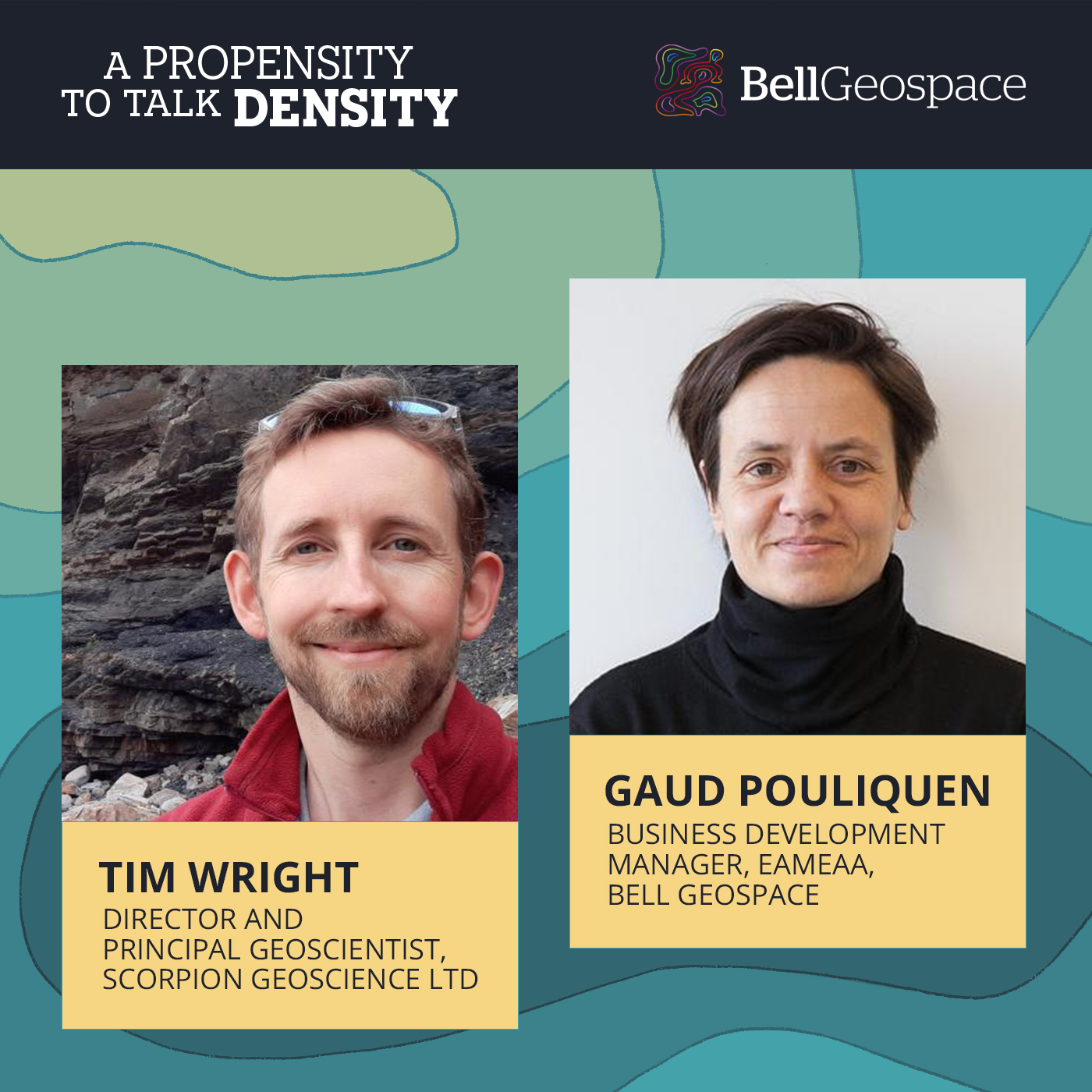Minerals and Gravity Gradiometry - The Whole World in Your Hands
Key Points
- Variations in rock density can be used to detect valuable ore deposits. Gravity is a measure of density
- Mapping anomalies of the gravity field in turn maps the geometry of geology hosting mineralisation
- Full Tensor Gravity Gradiometry measures the gravity field in all directions, making it a very useful technology in mineral exploration
Gravity and density are both critical to mineral explorers. The art of measuring variations in it, called gravity gradiometry, is of key importance to the oil and gas and mining industries.
To glean some expert insights, A Propensity to Talk Density host Tyler Kern spoke with experts Dr. Tim Wright, Director and Principal Geoscientist at Scorpion Geoscience Ltd, and Gaud Pouliquen, Business Development Manager EAMEAA at Bell Geospace.
Dr. Wright first explained the connection between gravity and density. “It’s a fundamental force of nature that every object experiences. Density and gravity are related,” Wright said. “Density affects gravity, and gravity is a measure of density. We can use that to our advantage in exploring.”
Gravity and density help identify rocks and materials because of the contrast. “These changes are measurable with a gravity gradiometer. It measures the rate of change of gravitational acceleration due to underlying rock properties. It’s the second most accurate instrument after the atomic clock” Pouliquen said.
The detected contrasts can be due to a change in density or a change in geometry. Much of the time, the contrasts indicate the rocks and materials that the oil and gas and mining industries seek to discover.
Wright also explained the basics of rocks and minerals.“ Rocks are often described by colors and textures. The rocks we are looking for are harder to find but have characteristics we can detect,” Wright said. “There’s a density spectrum.” Next, he shared samples of a variety of rocks and their attributes.
Full Tensor Gravity Gradiometry (FTG) is even more exact in finding anomalies, as it measures the full gravity field in all directions. “With this 3D gradiometry, we can use magnetism and gravity to determine different physical properties,” Pouliquen added.


